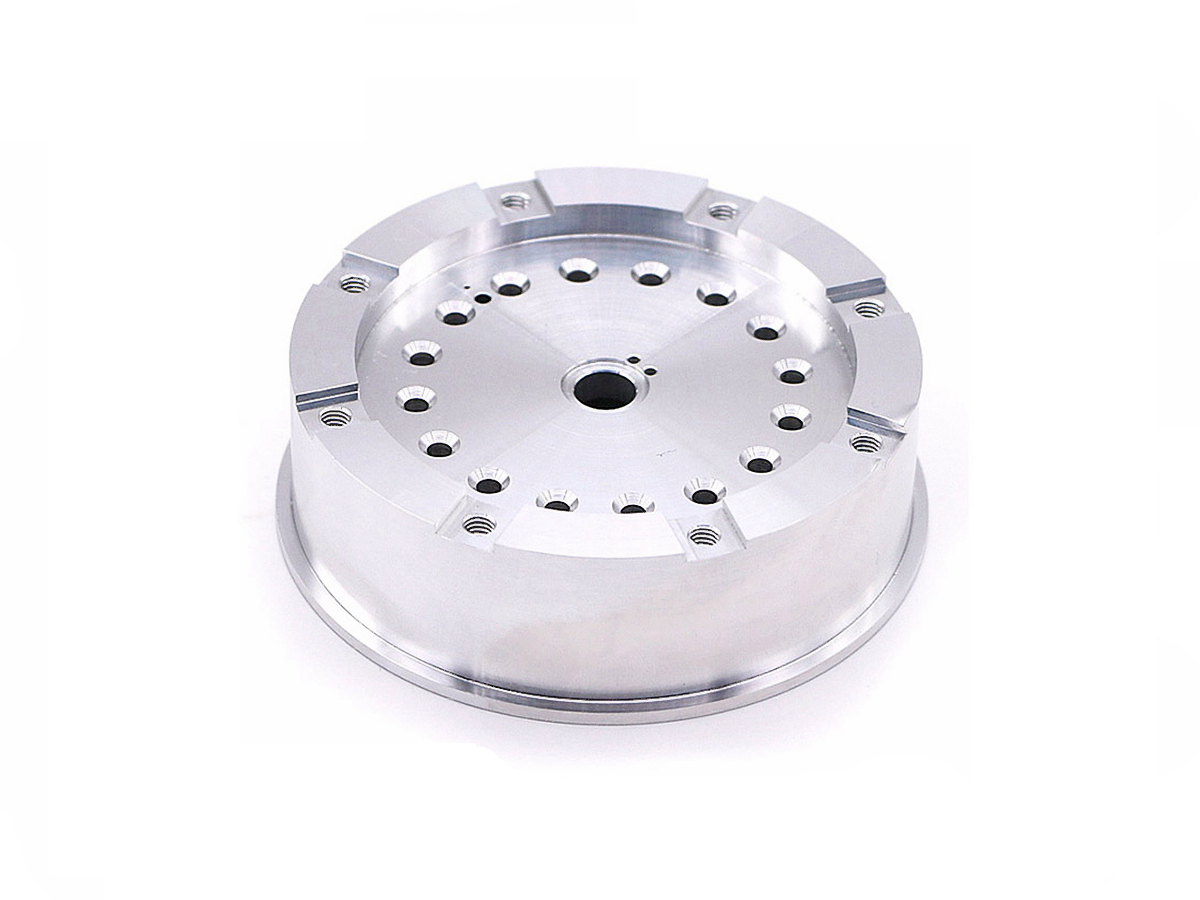Custom CNC Machined Gears for Robotic Systems and Automation
Introduction to CNC Machined Gears for Robotics and Automation
In advanced robotic systems and industrial automation, gears are critical in ensuring smooth, precise, and reliable motion control. Custom CNC machined gears offer unparalleled precision, durability, and efficiency, enabling complex robotics mechanisms and automated equipment to perform accurately and consistently. These gears must withstand dynamic loading conditions, require minimal maintenance, and provide consistent torque transmission. High-performance materials such as alloy steel (4140), stainless steel (SUS316), titanium alloys (Ti-6Al-4V), and engineering plastics like PEEK are ideal choices for gear production.
Leveraging advanced CNC machining services, manufacturers produce customized gears with tight tolerances and superior surface finishes, ensuring optimal performance in robotic and automation applications.
Material Performance Comparison for CNC Machined Gears
Material | Tensile Strength (MPa) | Density (g/cm³) | Wear Resistance | Typical Applications | Advantage |
|---|---|---|---|---|---|
655-1035 | 7.85 | Excellent | High-load gears, robotic joints | High strength, excellent wear resistance | |
950-1100 | 4.43 | Very Good | Lightweight gears, precision actuators | High strength-to-weight ratio | |
515-620 | 8.0 | Good | Corrosive environments, medical robotics | Superior corrosion resistance | |
90-100 | 1.32 | Outstanding | Low-friction gears, insulating components | Excellent chemical and thermal resistance |
Material Selection Strategy for CNC Machined Gears
Material selection for CNC machined gears in robotic systems and automation requires careful consideration of load, friction, corrosion resistance, and operating environment:
Alloy Steel 4140 is chosen for gears requiring exceptional strength (up to 1035 MPa) and wear resistance under high-load conditions common in industrial robots and heavy automation equipment.
Titanium Ti-6Al-4V suits precision gear applications that require a high strength-to-weight ratio, reduced inertia, and good wear resistance, which is critical in aerospace robotics and advanced automation systems.
Due to its excellent corrosion resistance, Stainless Steel SUS316 is ideal for gears operating in harsh, corrosive environments, particularly in medical robotics or food processing automation.
PEEK is perfect for lightweight, low-friction gears, providing superior wear resistance and thermal stability, especially beneficial in electronic automation components and precision robotics.
CNC Machining Processes for Precision Gear Production
CNC Machining Process | Dimensional Accuracy (mm) | Surface Roughness (Ra μm) | Typical Applications | Key Advantages |
|---|---|---|---|---|
±0.01-0.02 | 0.8-1.6 | Spur gears, planetary gear systems | Efficient production, good accuracy | |
±0.005-0.01 | 0.4-1.2 | Gear blanks, shaft gears | High rotational accuracy | |
±0.005-0.01 | 0.2-0.8 | Complex bevel gears, worm gears | High precision, intricate geometries | |
±0.002-0.005 | 0.1-0.4 | High-precision gears, helical gears | Ultra-precise dimensions, exceptional finishes |
CNC Process Selection Strategy for Gear Manufacturing
Choosing the right CNC machining process for gear manufacturing in robotics and automation ensures maximum precision, reliability, and longevity:
CNC Gear Milling efficiently produces standard spur gears and planetary gear systems with good dimensional accuracy (±0.01–0.02 mm) and suitable finishes for general robotic and automation applications.
Precision CNC Turning is utilized for producing accurate gear blanks, shafts, and rotational elements with tight tolerances (±0.005 mm), crucial for alignment and rotational performance.
5 Axis CNC Milling is essential for complex geometries, including bevel and worm gears, providing intricate designs, exceptional accuracy (±0.005 mm), and high-quality surface finishes.
CNC Gear Grinding is selected for ultra-high-precision gears, such as helical and precision planetary gears, achieving the tightest tolerances (±0.002–0.005 mm) and superior surface finishes (Ra ≤0.4 µm), optimizing performance in critical robotic applications.
Surface Treatment Performance Comparison for CNC Machined Gears
Treatment Method | Surface Roughness (Ra μm) | Wear Resistance | Corrosion Resistance | Surface Hardness | Typical Applications | Key Features |
|---|---|---|---|---|---|---|
0.4-1.2 | Exceptional | Good | HRC 58-62 | Steel gears, high-load conditions | Improved hardness and durability | |
0.2-0.5 | Outstanding | Excellent (>1000 hrs ASTM B117) | HV 1500-2500 | Titanium gears, wear-resistant parts | High hardness, reduced friction | |
0.8-1.6 | Moderate | Excellent (>1000 hrs ASTM B117) | Unchanged | Stainless steel gears, medical equipment | Enhanced corrosion resistance | |
0.2-0.8 | Good | Excellent (>500 hrs ASTM B117) | Unchanged | Precision gear surfaces, low-friction applications | Superior surface finish and corrosion resistance |
Surface Treatment Selection for Gear Applications
Selecting appropriate surface treatments improves gear longevity and reliability:
Case Hardening significantly increases hardness (HRC 58-62) and wear resistance for alloy steel gears operating in high-load robotic applications.
PVD Coating enhances surface hardness (HV 1500-2500), wear resistance, and reduces friction, ideal for titanium gears in precision robotic actuators.
Passivation protects stainless steel gears from corrosion in demanding environments, ensuring reliable, hygienic operation in medical automation systems.
Electropolishing provides exceptional surface smoothness (Ra ≤0.8 µm) and corrosion resistance for gears requiring low friction and high precision.
Typical Prototyping Methods for CNC Machined Gears
CNC Machining Prototyping: Quickly produces precision gear prototypes with dimensional tolerances as tight as ±0.005 mm, validating functional performance and accurate fit.
Metal 3D Printing (Powder Bed Fusion): Enables rapid production of complex gear geometries with accuracy within ±0.05 mm, suitable for quick design validation and performance testing.
Quality Assurance Procedures
Gear Dimensional Inspection (CMM & Gear Inspection Machines): Verify precision tolerances (±0.005 mm).
Surface Roughness Testing (Profilometer): Ensuring compliance with surface specifications.
Hardness Testing (Rockwell, Vickers): Validate material and surface treatment performance.
Non-destructive Testing (Magnetic Particle, Ultrasonic): Ensures gear integrity and quality.
ISO 9001 Documentation: Traceable manufacturing processes.
Industry Applications
Industrial robotic joints and actuators.
Precision aerospace robotic mechanisms.
Medical automation equipment.
Related FAQs:
What materials are optimal for CNC machined gears?
How does CNC machining ensure gear accuracy and durability?
Which surface treatments improve gear performance?
Why are prototyping methods important for CNC gear development?
What quality assurance methods are critical for machined gears?

